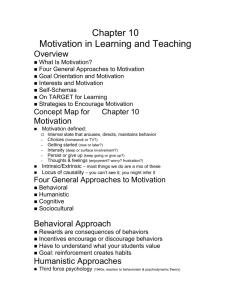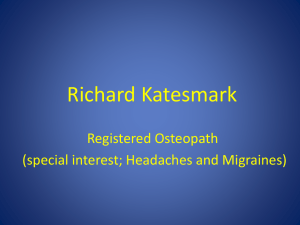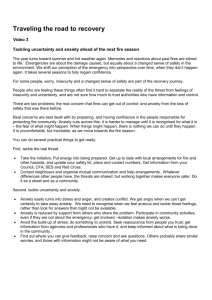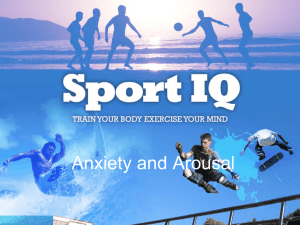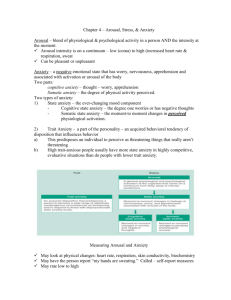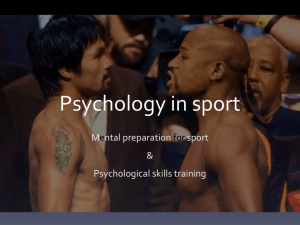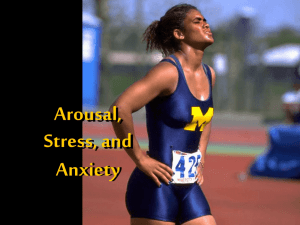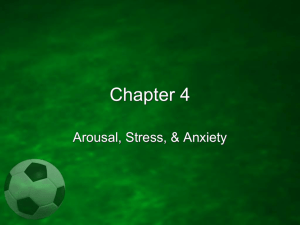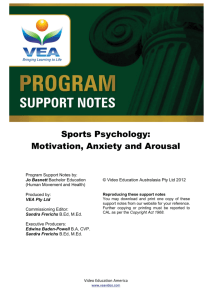Motivation, Arousal, & Anxiety
advertisement
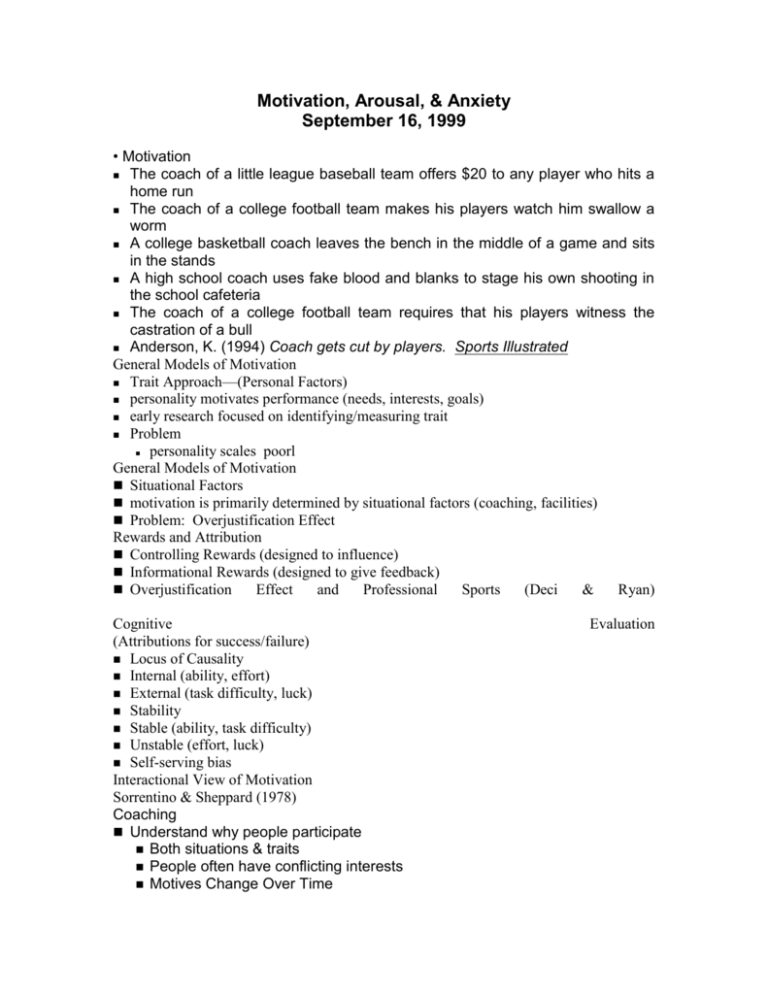
Motivation, Arousal, & Anxiety September 16, 1999 • Motivation The coach of a little league baseball team offers $20 to any player who hits a home run The coach of a college football team makes his players watch him swallow a worm A college basketball coach leaves the bench in the middle of a game and sits in the stands A high school coach uses fake blood and blanks to stage his own shooting in the school cafeteria The coach of a college football team requires that his players witness the castration of a bull Anderson, K. (1994) Coach gets cut by players. Sports Illustrated General Models of Motivation Trait Approach—(Personal Factors) personality motivates performance (needs, interests, goals) early research focused on identifying/measuring trait Problem personality scales poorl General Models of Motivation Situational Factors motivation is primarily determined by situational factors (coaching, facilities) Problem: Overjustification Effect Rewards and Attribution Controlling Rewards (designed to influence) Informational Rewards (designed to give feedback) Overjustification Effect and Professional Sports (Deci & Ryan) Cognitive (Attributions for success/failure) Locus of Causality Internal (ability, effort) External (task difficulty, luck) Stability Stable (ability, task difficulty) Unstable (effort, luck) Self-serving bias Interactional View of Motivation Sorrentino & Sheppard (1978) Coaching Understand why people participate Both situations & traits People often have conflicting interests Motives Change Over Time Evaluation Major Motives for Participation Youth Sports: improving skills, fun, being with friends, fitness Exercise Participation initially: health factors, weight loss, fitness, self-challenge, feel better later: program enjoyment, social factors Coaching Structure Environment to enhance motivation Competition or recreation Provide for multiple motives Coaching Be Realistic Other physical and psychological factors influencing motivation must be considered Some motivational factors are more easily influenced than others Imagine that it is only a few minutes before a championship game. Your opponent in the sport in which you participate has defeated you once earlier in the season, the only loss you suffered. How do you feel three minutes before the game begins? 9 8 7 6 5 4 3 2 1 Very anxious not at all anxious Arousal, Anxiety, & Stress Arousal--neutral emotionally (neustress/eustress) Anxiety--negative emotionally (distress) cognitive & somatic Spielberger’s trait/state anxiety distinction Measurement Physiological measurement of arousal biofeedback devices Questionnaires SCAT and CSAI Sport Competition Anxiety Test SCAT--measure of competitive trait anxiety trait anxiety correlates significantly with the amount of state anxiety experienced just before competition Scoring reverse score items 6 and 11 as: 1 = often 2 = sometimes 1 = hardly ever Do not score “dummy” items 1, 4, 7, 10, and 13 scores range from 10 (low competitive trait anxiety) to 30 (high competitive trait anxiety) Stress Process 1. Environmental Demand 2. Individual’s Perception of Demand 3. Response arousal, state anxiety, muscle tension, attention shifts 4. Outcome Drive Theory Monotonic relationship between arousal/anxiety and performance As one increase, so too does performance Inverted-U Hypothesis Optimal arousal theory Zones of Optimal functioning Catastrophe Model (deterioration is not so gradual) Why Arousal Influences Performance Facilitation and Disruption Nideffer’s Attentional Shift Model low arousal: attention too broad high arousal: attention too narrow Muscular Tension Self-handicapping
